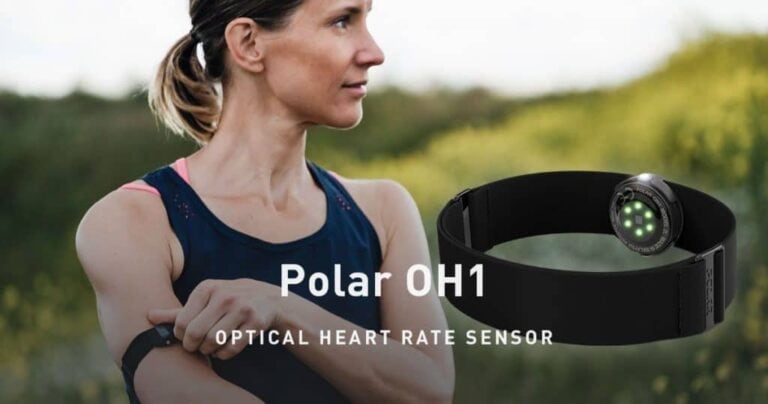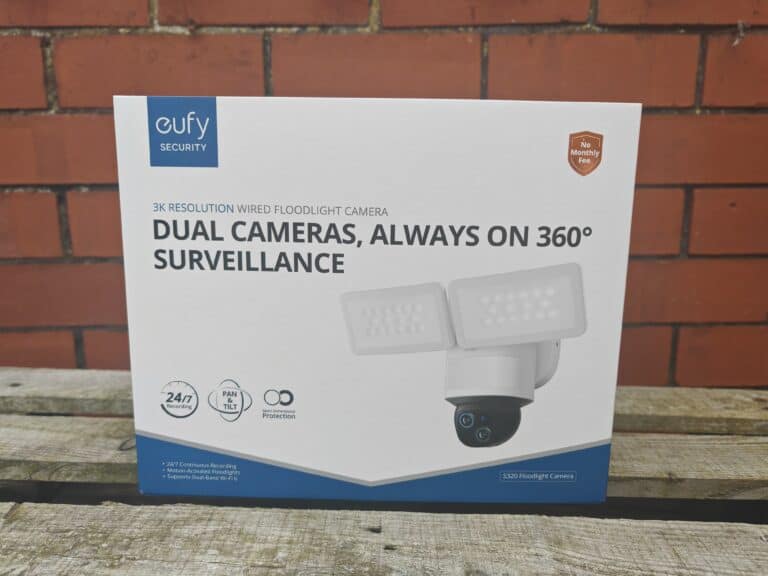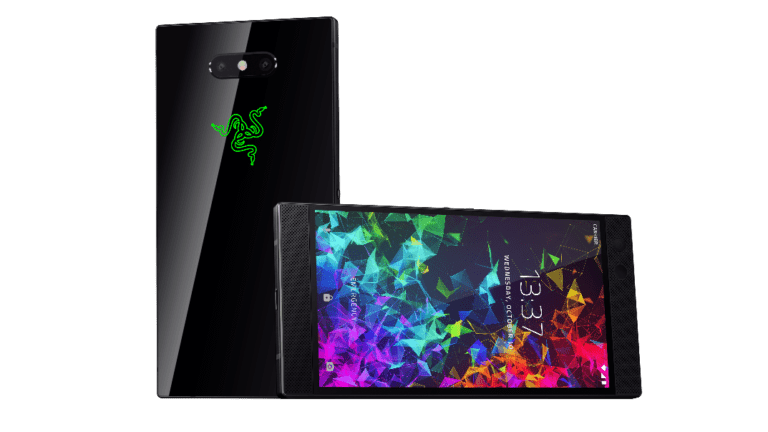Any links to online stores should be assumed to be affiliates. The company or PR agency provides all or most review samples. They have no control over my content, and I provide my honest opinion.
After writing a guide on Apple AirTags, I decided to buy one to try and use to track out luggage on a recent trip to Italy. I find travelling stressful, and airports and airlines have become increasingly incompetent (or short-staffed) since Covid. AirTags have proven to be a popular way to track luggage, and I wanted to see how good they were and hopefully reduce the stress when it feels like my bags always come out last on the luggage machines.
Conveniently, PAJ contacted me about reviewing one of their GPS trackers just before I went away and comparing how well the two devices tracked my luggage seemed like a logical test.
Specification
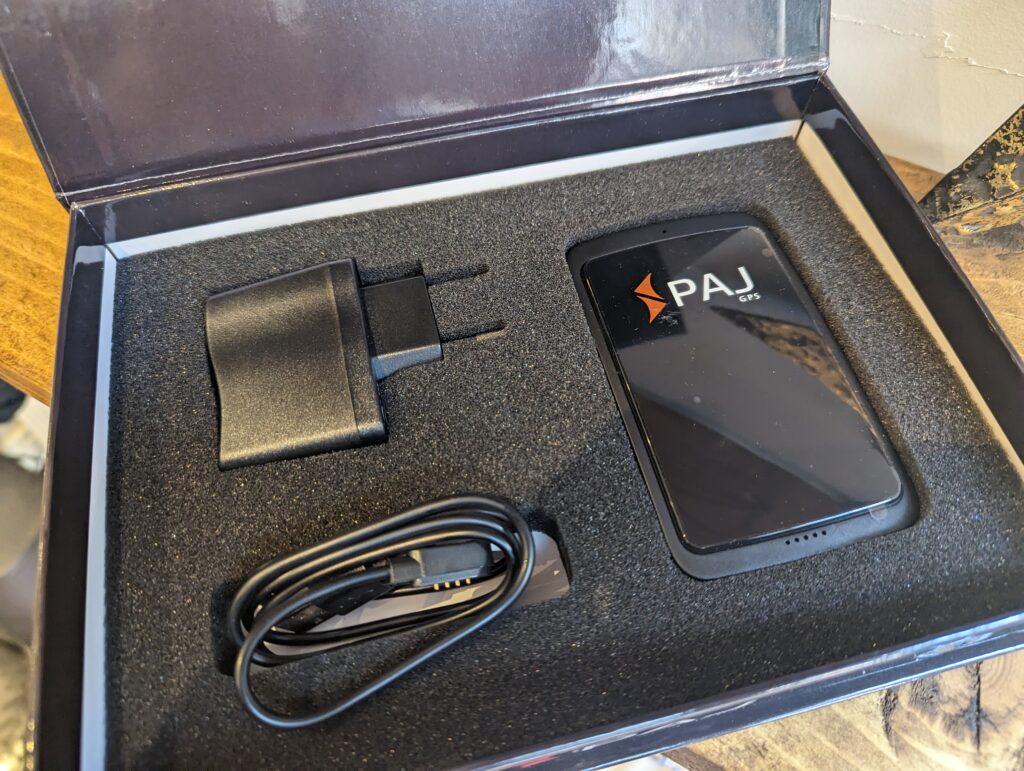
- Battery Life: approx. 40 days everyday tracking: approx. 20 days
- Dimensions 106 mm x 63 mm x 23 mm
- Weight 148 g
- GPS accuracy up to 5 metres depending on the GPS reception of the finder
- Battery 3,7 v 5000 mah li-ion
- Time to launch cold start approx. 45-120 sec. standby approx. 35 sec. in operation approx. 1 sec.
- Charger 110 -240 v, ac, 50 hz input 5 v, dc output
- Network GSM / GPRS / WCDMA / FDD-LTE / TDD-LTE
- GPS-reception -120 dbm
- GSM / GPRS module mtk6261
- GPS-chip sc9820e
- Band 850 / 900 / 1800 / 1900 mhz
- Storage temperature from -40°c to +85°c
- Operating environment from -20°c to +55°c
- Humidity 10% – 70%
- Splash Proof (No IP rating)
Finder Portal Features
- Live tracking: you can check where your tracker is at any time.
- 365 days of track storage: driven routes, up to 365 days, retrievable.
- Set alarms via the finder portal: activate alarms conveniently at the touch of a button via the app.
- Notification by email and push message: you will be immediately informed of the alarms triggered.
- Manage multiple subscriptions in one access: easily manage multiple GPS trackers with one access.
- No sms costs more: you have full cost control.
- No setup for you: all you have to do is log in to the finder portal.
- Usable via PC, tablet and smartphone: free online finder portal app for Android and ios.
Setup
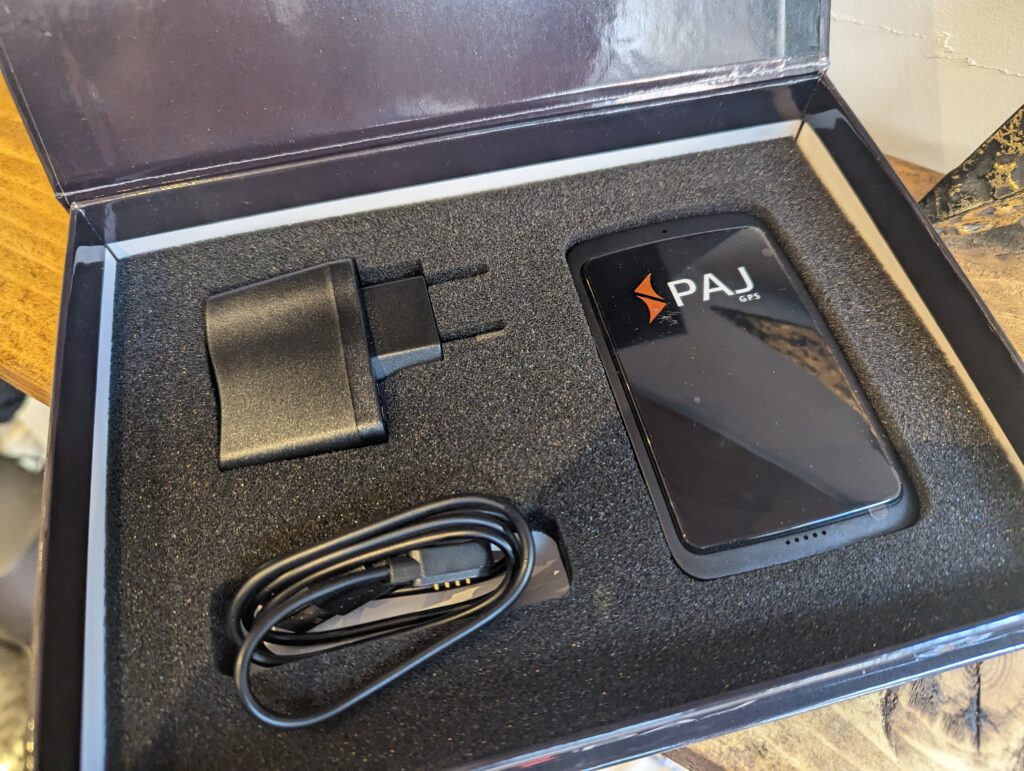
For me, there was really any setup to do as my sample was shipped with a month subscription pre-applied.
For most people, there isn’t much to do either. When you buy the tracker, it is shipped with the SIM card set up. When you receive it, you need to register an account at v2.finder-portal.com, register the device with the ID on the back of it and select your subscription. That’s it.
You can also download the app and track your devices via that. PAJ have multiple apps. I downloaded the Online Finder app, because the instructions used that name. However, PAJ Portal v2 is the newer app.
Tracking Luggage with GPS vs Apple AirTag
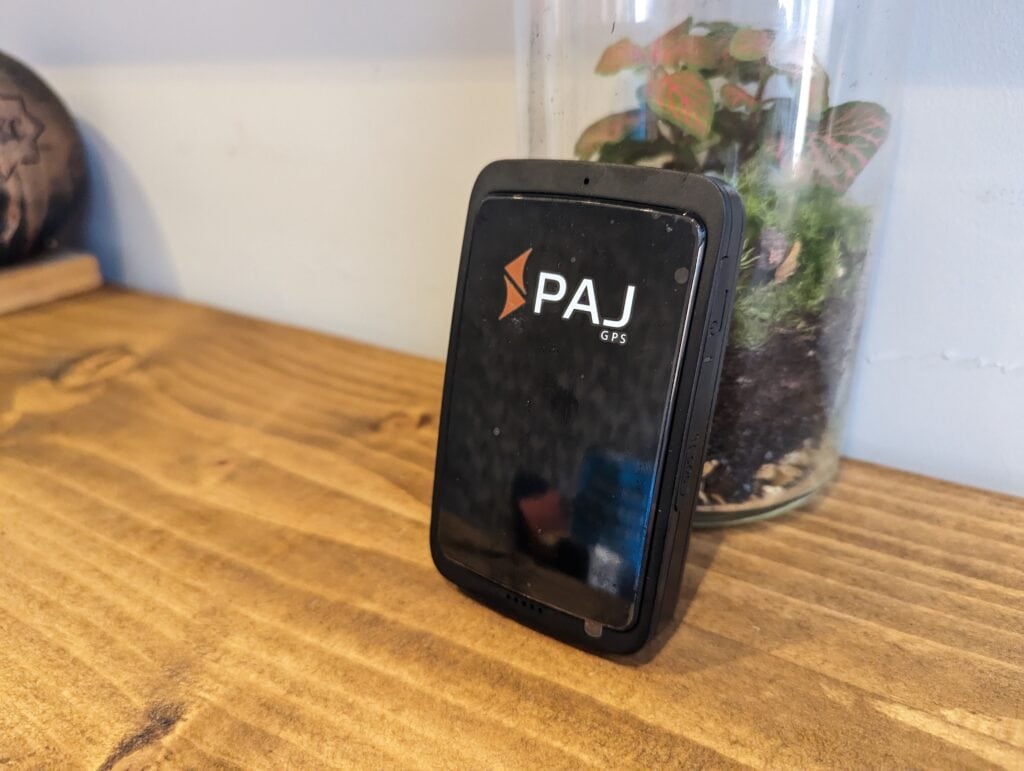
I chose a sub-optimal test for using this GPS tracker. It arrived the day before I went on holiday to Italy, and I had already bought an Apple AirTag to see how that performed with tracking luggage. I don’t drive much, don’t have kids or pets, so this seemed like the most useful scenario for me.
The problem with GPS tracking luggage (and people/pets) is that GPS generally doesn’t work indoors. For GPS to work, it needs to pick up three or more signals from a GPS satellite. Considering these signals are coming from satellites in orbit, they are incredibly weak and prone to signal attenuation caused by construction materials. A GPS signal at ground level will typically be around -130dBm vs -70dBm of a good mobile signal. For each 3dB, the signal strength halves, so the GPS signal will be 0.0000009537, the strength of a good mobile signal.
As long as you are aware of that, the GPS tracking works well. This tracker updates every 30 seconds, but in reality, for me, it only updates the location intermittently because it was indoors most of the time.
When we travelled with the luggage, the location was updated. This also happened when the luggage was transported from the airport to be loaded onto the plane.
So in my scenario, the live tracking accuracy wasn’t always perfect, but I knew when my luggage was transported to the plane and if it landed in the same country as me. Which is more or less what I wanted it for.
For the Apple AirTag, this works differently, using Bluetooth and UWB for tracking objects that are in relatively close proximity to you. It can then also crowdsource location data from other iPhone users.
Due to the popularity of the iPhone, performance is generally good in cities, but it is highly dependent on other iPhone users being in close proximity.
However, the Apple AirTag is far superior for tracking objects nearby and works indoors too. So for the best luggage tracking solution, you’d probably want to combine the two.
One handy feature of the AirTag is the alerts you immediately get when you leave it behind. Admittedly it was a bit annoying for a large piece of luggage, but I’d imagine it would be very useful for a purse/wallet/keys.
Live tracking
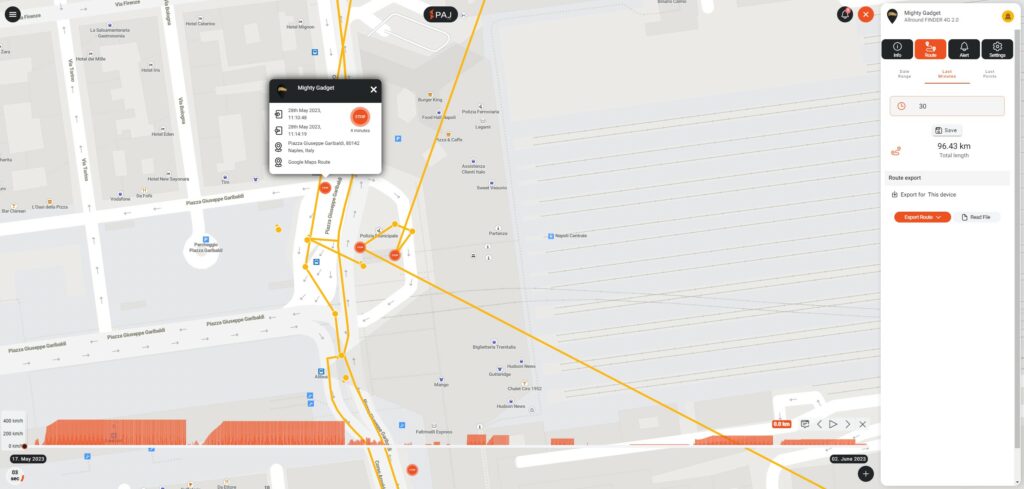
For live tracking and all the other features, you can use the web portal or mobile app.
This basically just says the last current known location. For me now I am home, the tracker has been indoors for a couple of days.
Clicking on the device, it informs me it was last updated 12 hours ago and is in standby mode. The location isn’t quite right, and I suspect this is because it didn’t update in the time it took us to park and carry the case indoors.
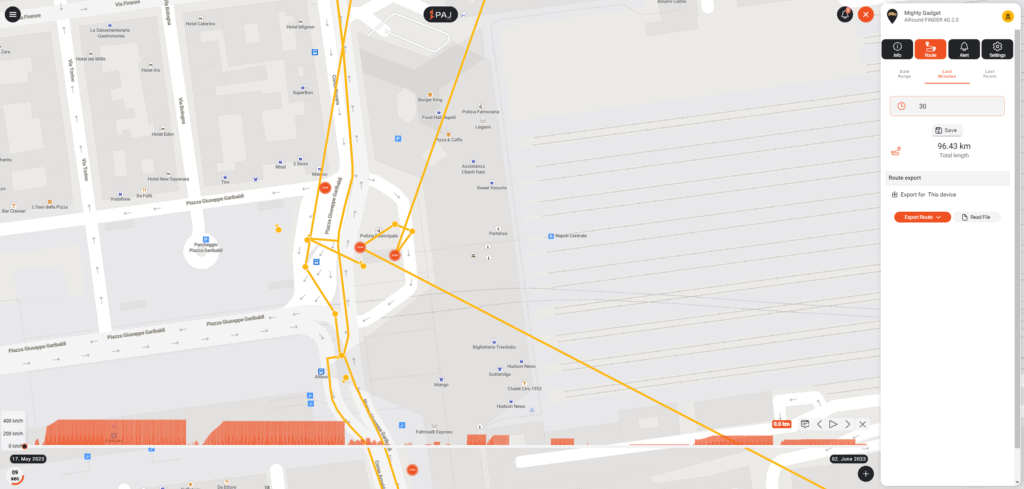

When you click on the device, you have the option to share a link with the live data, which can be handy for things like tracking someone.
There is also a Google Maps link which will guide you to the last known location.
The route tab is a useful feature which will plot the GPS data points onto a map. You can have it displayed using a heatmap so you can visualise how long it has been in a certain place.
On the bottom of the map screen, you can also view the speed that was measured when tracking. If you then click on the timeline just below, the map will relocate to the point where that measurement was taken. Not much use in my scenario, but this would be very useful for someone tracking a vehicle, especially business owners tracking employee driving habits.
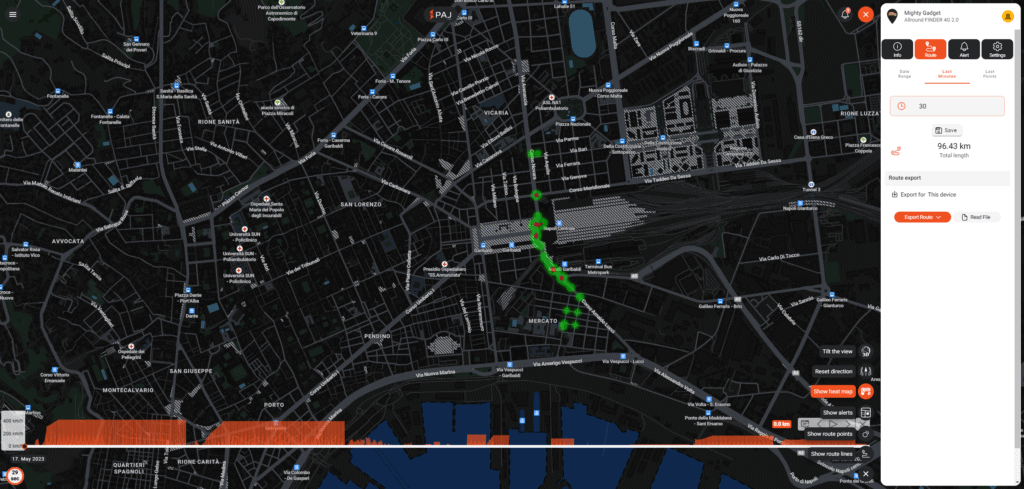
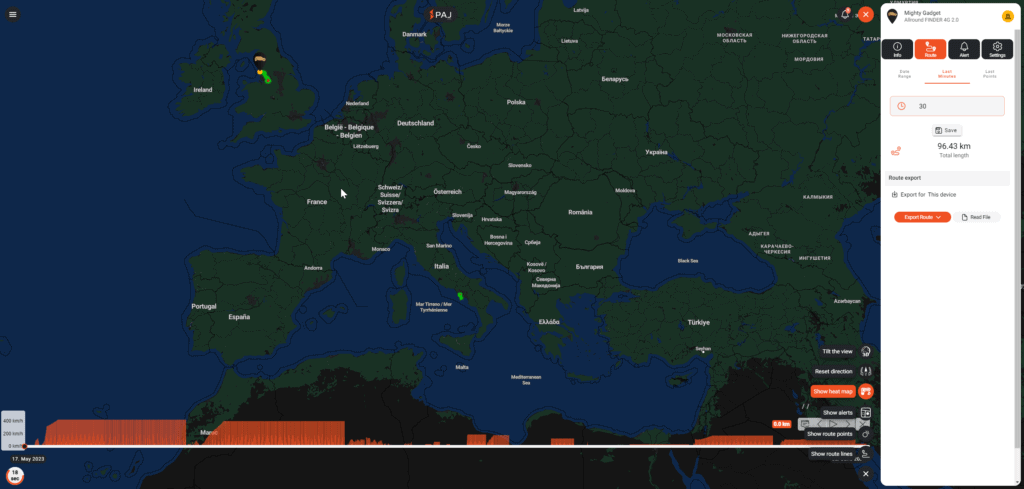
Alarms
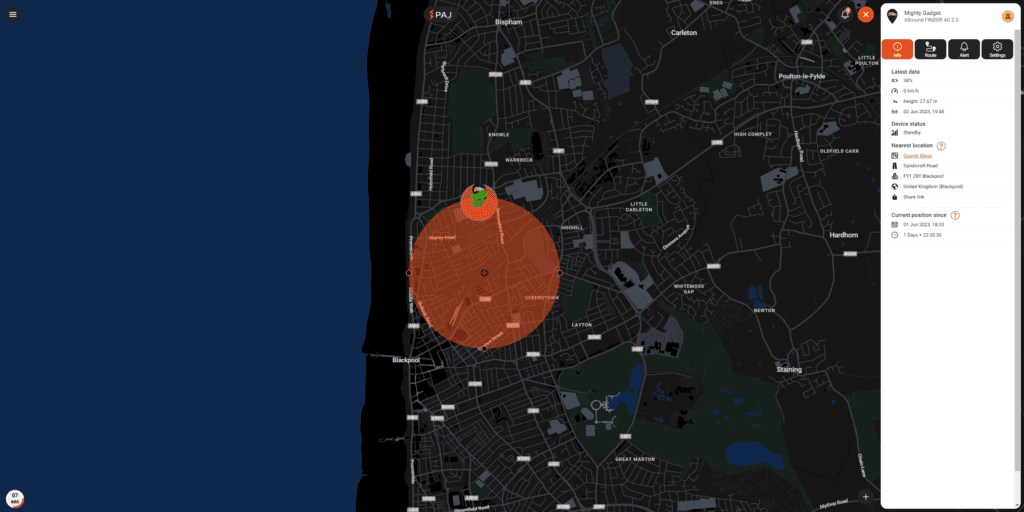
With the alarms feature, you have options for low battery, shock, speed, SOS and geofence.
The SOS alert is triggered by a button on the device itself.
I used the geofence alert and set it up around the airport for entering and leaving, and it worked reasonably well. It is obviously not as responsive as the AirTag, but when the device gets a GPS signal, you will be informed via the app and email
Battery Life
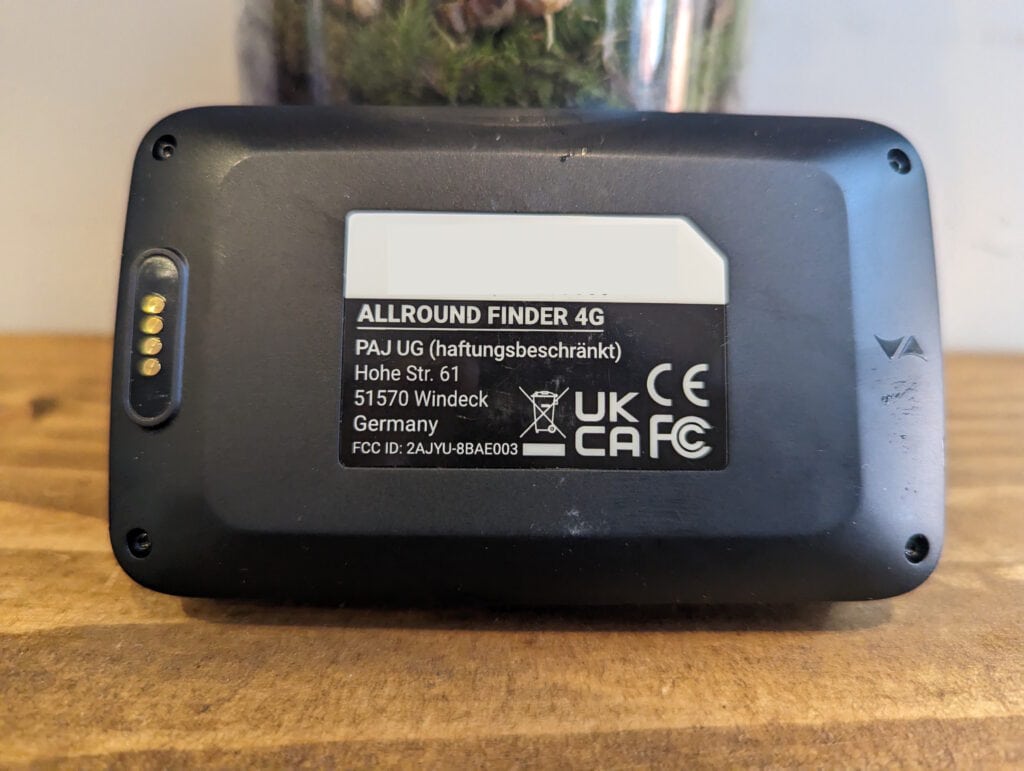
One thing I don’t like about this tracker is the charger. It uses a magnetic contact, which helps make it robust and splashproof. However, the magnetic contact is quite weak and easy to dislodge.
I hadn’t charged the battery fully before I left. It was 76% when I took my first screenshot in Altrincham the night before my holiday on 25th of May. As I write this 3rd of June, the batter is at 38%. So it lost 38% points in 9 days, which seems to indicate it will last over 20 days when in use.
The device seems to go into auto-standby (presumably when there is no GPS signal), which extends the battery life.
Cost of subscription vs LandAirSea and Tracki
The PAJ GPS tracker has a built-in SIM card, and you need to subscribe to the service through the PAJ portal. I don’t believe there is a way to use your own SIM card.
However, it is quite affordable, albeit not free to use, like AirTags or other Bluetooth trackers.
I’d probably use this on an ad-hoc basis, paying for one month every time I wanted to use it. A one-month plan is £5.99. This will automatically renew, so you need to remember to cancel it.
For one year, it is £54.99, and for two years, it is £89.99.
The data plan covers 171 countries, with Google telling me there are 195 countries in the world. Unsupported countries appear to be mostly in parts of Africa, including Libya, Ethiopia and Namibia. Then some Middle Eastern/Central Asian countries, including Syria and Turkmenistan.
The update frequency is 30 seconds which is more frequent than the default update speed of competing devices. The subscription cost is also significantly cheaper.
It is worth noting that there is also a brand called Salind, which uses the FINDER Portal from PAJ GPS, and the cost per month is the same.
| 1 Month 30 seconds update | 1 year 30 seconds update | 2 years 30 seconds update | |
|---|---|---|---|
| PAJ | £5.99 | £54.99 | £89.99 |
| Tacki | 18.95 Euros (£16.30) | 87.95 Euros (£75.76) | 125.45 Euros (£108.06) |
| LandAirSea | $34.95 (£28.07) | $314.55 (£252.63) | $419.40 (£336.84) |
Price and Alternative Options
The PAJ Allround Finder GPS tracker 2023 is available from Amazon for just £30. The 4G model I was sent is £70.
They also have the GPS Power Finder, which has a magnetic mount and 90 days battery life making it suitable for cars, machinery, boats and other vehicles. This is a lot more expensive at £150.
Then there is the Car Finder 4G, which plugs into the OBD 2 interface and then two other wired vehicle trackers, which require power supply via a car battery (9-75V).
There is plenty of competing options. Some of these have more reviews on Amazon, but PAJ seems to get the best overall review.
LandAirSea 54 is well-reviewed and costs less than £20. The caveat is that the monthly plans are $19.95 minimum, so long-term costs will be higher.
The Tracki 4G GPS Tracker has the most reviews, with over 35k, but again, the running costs are quite high, especially for one month at 15 Euros.
Overall
I think the PAJ Allround Finder 4G is excellent. As far as GPS trackers go, this appears to be the best value for money when you factor in the subscription costs. This is particularly true if you only want to use it once in a while with the one-month plans.
In my scenario, GPS tracking isn’t perfect for things like luggage. The device needs to pick up a GPS signal, and this will often not be possible indoors. That being said, it still worked well for me, it was able to track our movements around Italy, and when the luggage was unloaded off the plane, I was updated with the location, reassuring me that my luggage had arrived with us both on the way out and coming home. For things like luggage, you may want to combine this with an AirTag or other Bluetooth tracker like Tile, which would give you better indoor tracking features.
Overall, it worked just like I wanted it to, and the device is cheap to buy upfront, with subscription fees cheaper than the competition. It is good enough that I plan to continue using it for future trips, and there doesn’t seem to be anything else better than this (at least when factoring in value for money).
PAJ Allround Finder 4G GPS Tracker Review Rating
Summary
The PAJ Allround Finder 4G GPS Tracker worked just like I wanted it to, and the device is cheap to buy upfront, with subscription fees cheaper than the competition. It is good enough that I plan to continue using it for future trips, and there doesn’t seem to be anything else better than this (at least when factoring in value for money).
Overall
95%-
Overall - 95%95%
Pros
- Cheap monthly subscription (much cheaper than the competition)
- Good performance when factoring in the limitations of GPS
Cons
- Upfront cost is higher than the competition (they are likely loss leaders for the hardware)
I am James, a UK-based tech enthusiast and the Editor and Owner of Mighty Gadget, which I’ve proudly run since 2007. Passionate about all things technology, my expertise spans from computers and networking to mobile, wearables, and smart home devices.
As a fitness fanatic who loves running and cycling, I also have a keen interest in fitness-related technology, and I take every opportunity to cover this niche on my blog. My diverse interests allow me to bring a unique perspective to tech blogging, merging lifestyle, fitness, and the latest tech trends.
In my academic pursuits, I earned a BSc in Information Systems Design from UCLAN, before advancing my learning with a Master’s Degree in Computing. This advanced study also included Cisco CCNA accreditation, further demonstrating my commitment to understanding and staying ahead of the technology curve.
I’m proud to share that Vuelio has consistently ranked Mighty Gadget as one of the top technology blogs in the UK. With my dedication to technology and drive to share my insights, I aim to continue providing my readers with engaging and informative content.


